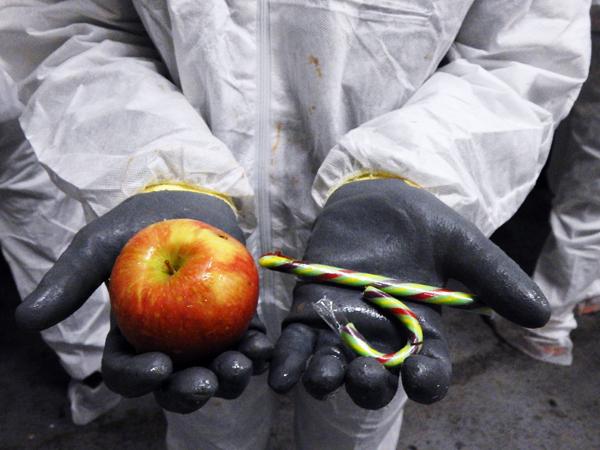Revelations in garbology
Environmental studies capstone and archaeology FYSEM sort garbage to understand Hamline from a trashy perspective.
December 14, 2016
The sickly sweet scent hits first. Then a glimpse of sticky liquids catches the eye. When the fight or flight response kicks in, it’s heavily geared towards flight.
Most people would not opt to spend their weekend sorting trash, but students from Professor Valentine Cadieux’s environmental studies senior capstone and Professor Brian Hoffman’s FYSEM volunteered to audit trash from the Anderson Center last Friday, Saturday and Sunday.
“The grossest thing was a trash bag from the dishroom,” said junior Jenni Abere, an environmental studies student. “If you don’t empty your tray into the food waste bin, the workers in the dishroom just empty the whole plate into the trash.”
Hoffman and Cadieux have been working on ways that the anthropology program and the environmental studies program can collaborate on projects together this semester. Cadieux plans on using data collected from the trash audit to propose ways that Hamline and the Anderson Center in particular can be more sustainable and environmentally friendly. As an archaeologist, Hoffman believes that garbology (the study of garbage) provides valuable insight into the material habits of humans.
“It’s an interesting opportunity to think about what Hamline is as an institution and who we are as a community by spending some time looking that the trash we throw away,” Hoffman said.
One of Hoffman’s students, first-year Yaseen Hayward said that they’d been learning this semester about how the material record is often a more accurate representation of people’s habits than their own interpretations.
While sorting trash on Sunday, first-year David Hanson thought the Hamline community could be doing more to recycle and compost responsibly. Junior Jenni Abere, an environmental studies student, agrees.
“I think a lot of recycling bins get put in the trash,” Abere said. “I don’t think they’re even taken down to the recycling bins because there are a lot of bags in here that have only recyclable items in them.”
Hoffman thinks this phenomenom occurs due to problems in the system.
“I suspect [the amount of recyclables ending up in the trash] is not a problem with the workers, it’s a problem with the workflow,” said Hoffman. “It just needs to be designed in a way to work for them, because they’re getting paid to do whatever they’re asked to do.”
One area that seems to be a problem from a first-hand glance is the amount of waste coming from Starbucks.
“From Starbucks we’ve seen a lot of uneaten food,” Abere said. “The other day we found a lot of holiday cookies, not even touched, and a lot of uneaten sandwiches. It’s sad to see that those things aren’t being donated and just going completely to waste.”
In addition to the food waste being generated from Starbucks, the cups from hot beverages are not recyclable or compostable and end up in a landfill.
The data collected from Cadieux’s research could provide ideas on how Hamline could be more sustainable, and Hoffman sees a lot of potential for positive change, especially in regards to compost.
“It would be really cool to put in some new systems and do this [trash audit] again in two years time and see what we end up with.” Hoffman said.


